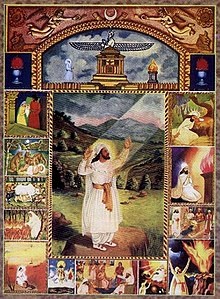The World-Cultural-Heritage &
the world-cultural-shock in 2024
Zoroastrianism
Text is written by MYRTLE LANGLEY
ON THE EXTERME EDGE of the western Iranian desert, in and around Bombay in India, in East Africa, and in many of the major cieties of the world are pockets of a small community totalling no more than 130,000 members worldwide. They are the Zoroastrians, known in India as the Parsis or “Persians”, followers of the prophet Zoroaster, who lived in ancient Persia. Zoroaster called for people to live the “good life” and follow Ahura Mazda, the “Supreme Creator”, or “Wise Lord”, symbolized by fire. 
Zoroaster believed that the world was essentially good, though tainted by evil. He also believed that, just as Ahura Mazda is responsible for all the good in life, so misery and suffering are the work of an independent force of evil, Angra Mainyu.
The two powers are locked in conflict. It is the duty of all people to support the good. Those who choose good are rewarded with happiness. Those who choose evil end in sorrow. Zoroaster taught that in the end good would triumph over evil.
